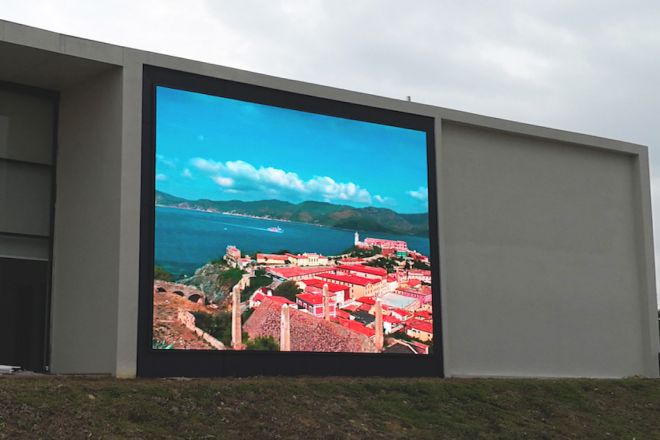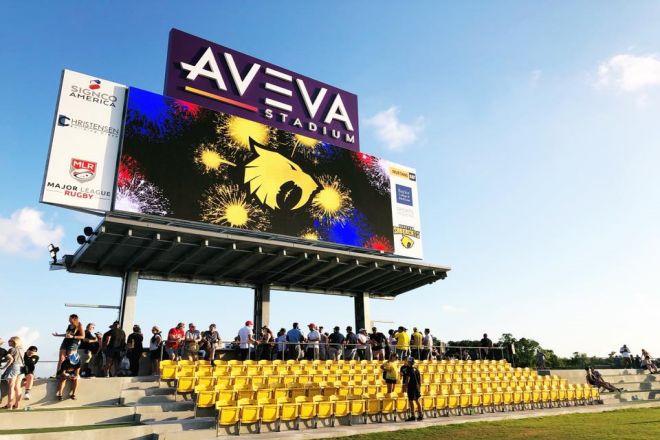Introduction

With the acceleration of urbanization, outdoor LED displays have become an important carrier for city image display, commercial advertising, and information release. However, in the market, we will find that there are significant differences in the quotations for outdoor LED displays of different brands and models, which confuses many consumers and buyers when choosing.
1. Technical specifications and material selection
1). Display technology and resolution
The display technology and resolution of the LED display directly determine its display effect and clarity. Different display technologies and resolutions can have a significant impact on price.
For example, Displays using high resolution and advanced display technologies (such as Mini LED and Micro LED) have relatively high manufacturing costs because they can provide higher pixel density and more delicate display effects. For example, the P2.5 model of LED display has a resolution of up to 160,000 dots/square, and the price is about 9,500 yuan per square meter, while the P8 model has similar brightness but has a lower resolution and the price is only about 3,100 yuan per square meter.
2). Luminous materials and color expression
LED chips, packaging, and color correction technology are key to display luminescence and color performance. High-quality materials and technology can bring better brightness and color effects, but they also increase costs.
- Reason analysis:
Using high-quality LED chips and precise color correction technology can ensure that the brightness and color performance of the display are more stable, uniform, and realistic. Such displays tend to cost more but also provide a better user experience.
3). Material and protection level
The material and protection level of the display determines its durability and environmental adaptability. Displays with different materials and protection levels will have different costs.
- Investment analysis:
Displays designed with high-strength materials such as metal and high protection levels can better resist the influence of the external environment, such as rain, dust, ultraviolet rays, etc. This type of display requires higher investment in materials, design, and manufacturing, so the price is relatively high. However, such investment can also bring better service life and stability and reduce later maintenance costs.
2. Dimensions and installation requirements
1). Display size
1.1). Difference between manufacturing cost and quotation:
As the size of LED displays increases, their manufacturing costs will also increase accordingly. This is mainly because large-size displays require more raw materials such as LED chips, circuit boards, frames, etc., as well as more complex production processes and longer production cycles. Therefore, under the same technical specifications, the quotation of large-size displays is usually higher than that of small-size displays.
For example, a P3 model, 500mm* 1000mm LED display may only cost a few hundred yuan, while the same P3 model, but a 2000mm* 4000mm display, may cost thousands of yuan or even more.
1.2). Challenges with large display sizes:
Material consumption: Large-size displays require more raw materials, which directly increases manufacturing costs.
Manufacturing difficulty: Large-size displays require higher precision and stricter quality control during the production process, which increases manufacturing difficulty and cost.
Transportation costs: Large-size displays are larger in size and weight, and transportation costs are relatively high. In addition, special packaging and protection measures are required during transportation to ensure that the display is not damaged.
2). Installation environment and customization requirements
2.1). Requirements for different installation environments:
Different installation environments (such as walls, columns, suspension, etc.) have different requirements for the structure and design of LED displays.
For example, a display screen installed on a wall needs to consider the load-bearing capacity and installation space of the wall; a display screen installed on a column needs to consider the stability and load-bearing capacity of the column. These special requirements will increase the design and manufacturing costs of the display.
2.2). Impact of customization requirements and special installation environment:
When customers have special customization requirements (such as special-shaped screens, curved screens, etc.), the manufacturing process of the display screen will become more complex, and the cost will increase accordingly.
At the same time, special installation environments (such as outdoor high altitude, high humidity, high temperature, etc.) will also increase the manufacturing and installation costs of the display because higher quality raw materials and more advanced technology are required to ensure the stability of the display. And durability.
For example, outdoor displays in high-altitude areas require special materials that are resistant to low temperatures and ultraviolet rays, and the prices of these special materials are usually higher. In addition, special installation structures (such as suspended installations) also require additional design and manufacturing costs.
3. Brand and after-sales service
- Brand premium
Well-known brands usually have higher market shares and consumer trust in the outdoor LED display market. This is mainly due to its advantages in product quality, technology research and development, and after-sales service. Well-known brands invest heavily in raw material procurement, production technology, quality control, etc., to ensure the stability and durability of their products.
At the same time, well-known brands often have advanced research and development capabilities and can continuously launch innovative and competitive new products. In terms of after-sales service, well-known brands usually provide comprehensive technical support and repair services to ensure that customers receive timely help and solutions during use.
Due to the advantages of well-known brands in product quality, technology research and development, and after-sales service, their LED display products often have higher quotations. This brand premium reflects consumers’ trust and recognition of well-known brand products, as well as the competitiveness and market position of well-known brands in the market.
Specifically, the brand premium may result in the price of well-known brands being a certain percentage higher than that of non-well-known brands for LED displays with the same technical specifications and sizes.
- After-sales service and warranty policy
The after-sales service content and warranty policies provided by different manufacturers vary. Generally speaking, high-quality after-sales service includes quick response, professional maintenance, technical support, regular inspections, etc. Warranty policies usually cover warranty period, warranty scope, warranty conditions, etc.
Perfect after-sales service and warranty policies support the LED display quotation. On the one hand, high-quality after-sales service can reduce the risk and cost of problems encountered by customers during use and improve customer satisfaction and loyalty.
On the other hand, a complete warranty policy can provide customers with more protection and confidence and reduce their worries. These advantages can increase the added value and competitiveness of products, thereby improving the product quotation to a certain extent.
Assume that there are two LED display manufacturers. Manufacturer A provides comprehensive after-sales service and a warranty period of up to three years, while manufacturer B only provides limited after-sales service and a one-year warranty period. With the same technical specifications and dimensions, Manufacturer A’s LED display price may be higher than Manufacturer B’s.
This is because manufacturer A has increased the added value and competitiveness of its products by providing high-quality after-sales service and warranty policies, thereby gaining higher market recognition and consumer trust.
4. Market supply, demand, and competition situation

1). Raw material price fluctuations
- Impact analysis:
Raw materials account for a large proportion of the manufacturing cost of LED displays, especially core components such as LED chips and circuit boards. The price fluctuations of these raw materials directly affect the quotation of LED displays.
For example, the price of LED chips is affected by various factors such as tight global chip supply, technological progress, and production costs. Its price fluctuations may lead to an increase or decrease in display quotations.
- Global supply chain and market changes:
With the close connection of the global supply chain, fluctuations in any link may be transmitted to the entire industry chain. Fluctuations in raw material prices are affected not only by a single factor but also by multiple factors, such as the global economic situation, trade policy, and environmental protection policy. These changes may have a direct or indirect impact on the quotation of LED displays.
2). Market competition and price war
- Market competition situation:
The LED display market is highly competitive, with different manufacturers competing for market share through technological innovation, quality improvement, service optimization, and other means. In this competitive environment, price wars have become a common marketing tool. In order to quickly occupy the market or increase sales, some manufacturers may adopt price reduction strategies to attract customers.
- The impact of price wars:
Price wars have a significant suppressive effect on LED display quotations. Under the pressure of price wars, some manufacturers may choose to sacrifice part of their profits in exchange for market share or sales.
This may lead to a decrease in the quotation level of the entire market, and even some products with poor quality and backward technology can enter the market at a lower price. However, this kind of price war often comes at the expense of product quality and long-term corporate interests and is not conducive to the healthy development of the industry.
In conclusion:
Raw material price fluctuations are one of the important factors affecting LED display quotations. The fluctuations are affected by a variety of factors, requiring manufacturers to pay close attention to market dynamics and adopt corresponding strategies to deal with them.
Market competition and price wars are common phenomena in the LED display industry. Although price wars can attract customers and increase sales in the short term, they may damage product quality and corporate interests in the long term. Therefore, manufacturers need to seek healthier and more sustainable competition methods, such as technological innovation, quality improvement, and service optimization.
Conclusion
Through a comprehensive analysis of the quotation differences of outdoor LED displays, we can see that the quotation level not only on the technical specifications, material selection, size, and installation requirements of the product itself but also on brand premium, after-sales service, market supply and demand and competitive situation, etc.
The influence of many factors. Therefore, when purchasing outdoor LED displays, consumers and buyers should consider these factors comprehensively and choose the most cost-effective product based on their actual needs and budget.
Finally, if you want to know more information about LED displays, please get in touch with us.
